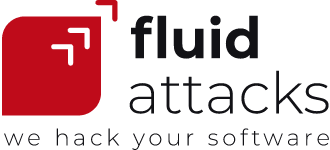| 5 min read
The attention of global media, U.S. federal agencies and other organizations is partly shifting from one world power to another this month. I mean, in the cybersecurity field, the Russians were in the limelight with the SolarWinds supply chain attack. Now, the Chinese have taken on the central role. Microsoft has attributed attacks on its Exchange Server to a Chinese state-sponsored group. These cybercriminals took advantage of four zero-day vulnerabilities in that software and have exploited them to break into many organizations, primarily in the United States. In this post, we will examine several details that are known so far about this incident.
What is Microsoft Exchange Server?
Microsoft Exchange Server (MES) is a "software that provides the back end to an integrated system for email, calendaring, messaging, and tasks." (Outlook, instead, is the app installed on your desktop that, like other email clients, can be synchronized with MES and used to send and receive emails.) This program is employed worldwide within large organizations but also small and medium-sized companies.
It turns out that in early January of this year, the cybersecurity company Volexity started to note abnormal activity in the MES servers of two of its clients. That activity involved large quantities of data sent to IP addresses apparently not linked to legitimate users. The Danish company Dubex also reported part of the issue the same month. It was not until March 2 that the situation became public: Microsoft released updates to remediate four zero-day (previously unknown) vulnerabilities identified in its software.
What were the alerts?
According to Microsoft, these flaws started to be exploited by a Chinese state-sponsored APT (advanced persistent threat) group it dubbed Hafnium. Based on the procedures and strategies observed, Microsoft said it is a modern and skilled team with a history of attacks against Office 365 users. Indeed, it is a Chinese group but "primarily operates from leased virtual private servers (VPS) in the United States," said Tung in ZDNet.
These attackers could access users' mailboxes, extract content and install backdoors on compromised servers for persistent access and control through such security flaws in the software. Their first reported attacks impacted higher education and research institutions, law firms, policy think tanks, defense contractors and NGOs, mainly in the United States. The situation looked thornier when the investigation revealed attacks against the U.S. government agencies. Curiously, these critical vulnerabilities' exploitation could affect servers running MES 2013, 2016, and 2019 (on-premises products) but not Exchange Online (cloud-hosted service).
Microsoft began to publicly request all companies that were making use of MES to apply the updates as soon as possible. At the same time, it reflected concern that other malicious hacker groups beyond Hafnium could also quickly target unpatched systems. (It seems this has already happened.) On March 3, the U.S. Cybersecurity & Infrastructure Security Agency (CISA) issued an emergency directive regarding the matter. It asked all government agencies to comply with the installation of patches, especially if there were no indicators of compromise in their networks and systems. Otherwise, they should "disconnect their Microsoft Exchange on-premises servers and report their findings to CISA for further investigation," said Osborne in ZDNet.
The next day, CISA updated the alert, reporting they were "aware of threat actors using open source tools to search for vulnerable [MESs]" and that agencies needed to look for signs of suspicious behavior from at least September 1, 2020. Then, on March 6, CISA recommended that agencies urgently run the script that Microsoft released at that time to determine if their systems had been compromised. Around those days, Chris Krebs, who was director of CISA until Trump fired him, posted on his Twitter account an intriguing question: "Is this a flex in the early days of the Biden admin to test their resolve?" In fact, if we go to CNN Politics, we can find a post titled: "Biden administration expected to form [a] task force to deal with Microsoft hack linked to China."

Photo by Pineapple Supply Co. on Unsplash.
What are the four flaws?
The four MES zero-day vulnerabilities involved in this case are officially tracked as CVE-2021-26855, CVE-2021-26857, CVE-2021-26858, and CVE-2021-27065. The discovery of the first one (also known as ProxyLogon) and the last one is attributed to the researcher "Orange Tsai" of Devcore, a team of professionals who in October 2020 started reviewing MES security.
-
CVE-2021-26855 (CVSS 9.1) is a Server-Side Request Forgery (SSRF) vulnerability that allows "the attacker to send arbitrary HTTP requests and authenticate as the Exchange server."
-
CVE-2021-26857 (CVSS 7.8) "is an insecure deserialization vulnerability in the Unified Messaging service." It allows attackers to "run code as SYSTEM on the Exchange server," only if they combine it with another flaw or use stolen credentials.
-
CVE-2021-26858 (CVSS 7.8) and CVE-2021-27065 (CVSS 7.8) are post-authentication arbitrary file write vulnerabilities. "If Hafnium could authenticate with the Exchange server, then they could use [any of these vulnerabilities] to write a file to any path on the server."
According to several sources, attackers can carry out attacks using one or more of the above flaws. Therefore, they can write and deploy backdoor 'web shells' on the servers and have a foothold to execute further attacks. (Web shells are small, easy-to-use "scripts that provide a basic interface for remote access to a compromised system.") These can involve stealing credentials, installing malware (Kaspersky mentioned the high risks of ransomware), stealing full email inboxes, adding rogue user accounts, among others.
How worrying is the situation?
The incident with these vulnerabilities seems to have no connection with the SolarWinds supply chain attack that has affected around 18,000 organizations worldwide. In this new indiscriminate attack, it appears that the number of organizations impacted is approximately 30,000. More recently, some authors have even reported 60,000. In addition to the types of organizations previously mentioned as victims are "banks, credit unions, non-profits, telecommunications providers, public utilities and police, fire and rescue units."
It is currently quite worrying how slowly different companies and government agencies are patching their systems. Some even consider that there may be more severe results from this hack attributed to the Chinese than from the one related to SolarWinds. As the cybersecurity expert Brian Krebs has said, "By all accounts, rooting out these intruders is going to require an unprecedented and urgent nationwide clean-up effort." But the longer it takes everyone to remove the backdoors and update their systems, the longer attackers will continue to prowl their networks and even expand their access, reach and damage.
Let's keep the following in mind: Last year, Microsoft had already warned its MES customers to patch a different critical vulnerability (CVE-2020-0688). Nevertheless, months after the first attacks, "tens of thousands" of clients still had their systems not updated with the released patch. "Microsoft is concerned it could see the same scenario play out again with this set of Exchange server vulnerabilities." We will see what happens. For now, Microsoft continues with investigations and offering guidance to its customers on risk mitigation.
Recommended blog posts
You might be interested in the following related posts.











